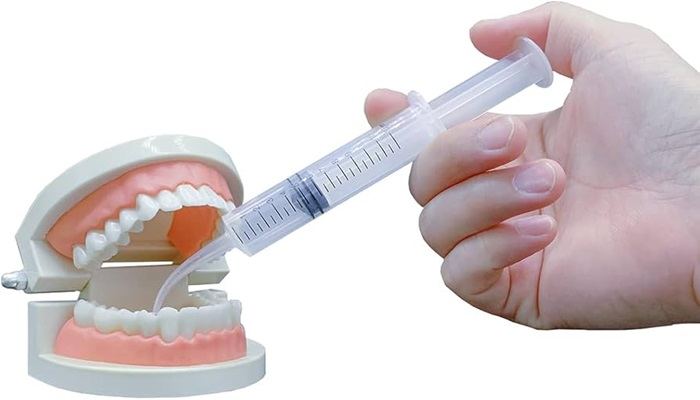Wisdom teeth, also known as third molars, are the last set of molars that typically erupt in late adolescence or early adulthood. For many individuals, these teeth can cause various dental issues, leading to the need for extraction. One of the critical aspects of wisdom tooth removal is the administration of injections to manage pain and ensure patient comfort during the procedure. This article will discuss when and how to give wisdom tooth injections, the types of anesthesia used, and important considerations for dental professionals.
What Is Wisdom Teeth?
Wisdom teeth usually begin to emerge between the ages of 17 and 25. In some cases, they can grow in without complications. However, many people experience problems due to:
Impaction: Wisdom teeth may become trapped in the jawbone or gums, leading to pain and infection.
Crowding: The emergence of wisdom teeth can cause crowding of adjacent teeth, leading to misalignment.
Infection: Partially erupted wisdom teeth can create pockets where bacteria can thrive, leading to gum disease or pericoronitis.
Cysts: Impacted wisdom teeth can lead to the formation of cysts, which can damage surrounding teeth and bone.
Given these potential complications, many dental professionals recommend the extraction of wisdom teeth, particularly when they are impacted or pose a risk to oral health.
SEE ALSO: What Does Salt Water Do For Wisdom Teeth
Types of Anesthesia for Wisdom Tooth Extraction
When it comes to wisdom tooth extraction, managing pain and anxiety is crucial. There are several types of anesthesia that can be used, depending on the complexity of the extraction and the patient’s comfort level:
Local Anesthesia: This is the most common type of anesthesia used for wisdom tooth extractions. It involves the injection of a local anesthetic, such as lidocaine, into the area around the tooth. This numbs the specific area, allowing the dentist to perform the extraction without causing pain to the patient.
Sedation Anesthesia: For patients who experience anxiety or have a low pain threshold, sedation anesthesia may be recommended. This can be administered through oral medications or intravenous (IV) sedation. Sedation helps the patient relax and may cause them to have little to no memory of the procedure.
General Anesthesia: In more complex cases, such as when multiple wisdom teeth are being extracted or if the patient has severe anxiety, general anesthesia may be used. This type of anesthesia puts the patient into a deep sleep, ensuring they feel no pain during the procedure.
When to Administer Wisdom Tooth Injections
The timing of administering injections for wisdom tooth extraction is crucial for ensuring patient comfort. Here are the key moments when injections should be given:
1. Pre-Operative Assessment
Before any injections are administered, a thorough pre-operative assessment should be conducted. This includes:
Medical History Review: Understand the patient’s medical history, including any allergies, current medications, and previous experiences with anesthesia.
Radiographic Evaluation: Review X-rays to assess the position of the wisdom teeth and determine the complexity of the extraction.
Patient Consultation: Discuss the procedure with the patient, including the type of anesthesia that will be used and what to expect during and after the extraction.
2. During the Procedure
Once the patient is prepared and comfortable, the following steps should be taken to administer the injections:
Positioning the Patient: Ensure the patient is comfortably seated or lying down in the dental chair. This helps reduce anxiety and allows for easier access to the surgical site.
Administering Local Anesthesia:
Site Preparation: Clean the injection site with an antiseptic solution to minimize the risk of infection.
Injection Technique: Use a dental syringe to inject the local anesthetic into the tissue surrounding the tooth. It is essential to aspirate (pull back on the syringe plunger) to ensure that the needle is not in a blood vessel. If blood is aspirated, reposition the needle and try again.
Gradual Injection: Inject the anesthetic slowly to minimize discomfort.
This allows the tissue to absorb the solution more effectively.
Wait for Anesthesia to Take Effect: After administering the local anesthetic, wait a few minutes for it to take effect. Test the area by gently touching the gums or the tooth to ensure the patient does not feel pain.
3. Managing Patient Comfort
Throughout the procedure, monitor the patient’s comfort level. If the patient expresses discomfort or pain, additional local anesthetic may be necessary. It’s essential to communicate with the patient and ensure they feel at ease.
Post-Operative Care And Instructions
After the wisdom teeth have been extracted, providing clear post-operative care instructions is vital for the patient’s recovery. Here are some key points to cover:
Pain Management: Inform the patient about the expected pain levels after the anesthesia wears off. Recommend over-the-counter pain relievers, such as ibuprofen or acetaminophen, to manage discomfort.
Swelling and Bruising: Explain that some swelling and bruising are normal after the procedure. Applying ice packs to the outside of the face can help reduce swelling.
Dietary Restrictions: Advise the patient to stick to soft foods and avoid hot, spicy, or crunchy foods for a few days. This will help prevent irritation to the extraction sites.
Oral Hygiene: Instruct the patient to avoid rinsing their mouth vigorously for the first 24 hours. After that, they can gently rinse with warm salt water to promote healing.
Follow-Up Appointment: Schedule a follow-up appointment to monitor the healing process and address any concerns the patient may have.
Conclusion
Administering wisdom tooth injections is a critical aspect of ensuring patient comfort during extraction procedures. By understanding the types of anesthesia available, knowing when to administer injections, and providing thorough post-operative care, dental professionals can help patients navigate the wisdom tooth removal process with confidence. Always prioritize patient safety and comfort, and be prepared to adjust your approach based on individual needs. With proper care and attention, wisdom tooth extractions can be a smooth and manageable experience for both patients and dental professionals.

